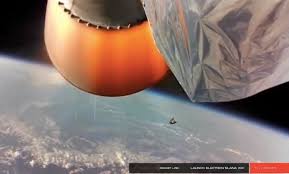
Breaking News
 NonConformist Series: Practical Wealth - Join us virtually Dec 29-30, 2025
NonConformist Series: Practical Wealth - Join us virtually Dec 29-30, 2025
 New bill would allow private citizens to fight cartels: 'WE ARE UNDER ATTACK'
New bill would allow private citizens to fight cartels: 'WE ARE UNDER ATTACK'
 Carnivore Got Me 90% There. This One Drink Changed Everything
Carnivore Got Me 90% There. This One Drink Changed Everything
Top Tech News
 Perfect Aircrete, Kitchen Ingredients.
Perfect Aircrete, Kitchen Ingredients.
 Futuristic pixel-raising display lets you feel what's onscreen
Futuristic pixel-raising display lets you feel what's onscreen
 Cutting-Edge Facility Generates Pure Water and Hydrogen Fuel from Seawater for Mere Pennies
Cutting-Edge Facility Generates Pure Water and Hydrogen Fuel from Seawater for Mere Pennies
 This tiny dev board is packed with features for ambitious makers
This tiny dev board is packed with features for ambitious makers
 Scientists Discover Gel to Regrow Tooth Enamel
Scientists Discover Gel to Regrow Tooth Enamel
 Vitamin C and Dandelion Root Killing Cancer Cells -- as Former CDC Director Calls for COVID-19...
Vitamin C and Dandelion Root Killing Cancer Cells -- as Former CDC Director Calls for COVID-19...
 Galactic Brain: US firm plans space-based data centers, power grid to challenge China
Galactic Brain: US firm plans space-based data centers, power grid to challenge China
 A microbial cleanup for glyphosate just earned a patent. Here's why that matters
A microbial cleanup for glyphosate just earned a patent. Here's why that matters
 Japan Breaks Internet Speed Record with 5 Million Times Faster Data Transfer
Japan Breaks Internet Speed Record with 5 Million Times Faster Data Transfer
Rocket Lab Launches 13 Cubesats on 1st Mission for NASA

Rocket Lab's ramp-up is going well so far.
The spaceflight startup launched 13 tiny satellites on its first-ever mission for NASA early this morning (Dec. 16), just a month after acing its first commercial flight.
A Rocket Lab Electron booster lifted off from the company's launch site on New Zealand's Mahia Peninsula at 1:33 a.m. EST today (0633 GMT and 7:33 p.m. local New Zealand time), kicking off the ELaNa-19 mission for NASA. [In Photos: Rocket Lab and Its Electron Booster]
Fifty-three minutes later, all of the payloads had separated from the Electron's "kick stage" and settled successfully into a circular orbit about 310 miles (500 kilometers) above Earth.
A Rocket Lab Electron booster carrying 13 NASA satellites, including 10 cubesats for agency's Educational Launch of Nanosatellites program, lifts off from the Mahia Peninsula of New Zealand's North Island on Dec. 16, 2018 on the ElaNa-19 mission.
Credit: Trevor Mahlmann/Rocket Lab
The little satellites will do a variety of work up there. For example, one will measure radiation levels in the Van Allen belts, to help researchers better understand possible effects on spacecraft. Another aims to demonstrate the effectiveness of compact, 3D-printed robotic arms; and yet another will help prove out technology for a new solar-sailing system that could allow small spacecraft to explore deep space, Rocket Lab representatives said.
California-based Rocket Lab aims to greatly increase access to space using the expendable Electron, which is 57 feet (17 meters) tall and can carry about 500 lbs. (227 kilograms) to Earth orbit on each $5 million mission. (The ELaNa-19 cubesats together weigh about 172 lbs., or 78 kg, Rocket Lab representatives said.)

 Aluminum Causes Brain Damage
Aluminum Causes Brain Damage Advanced Propulsion Resources Part 1 of 2
Advanced Propulsion Resources Part 1 of 2


